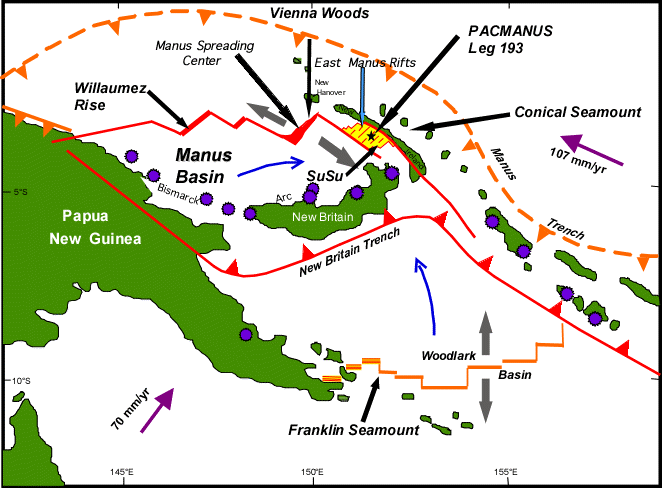
Figure 2. Regional tectonic setting of the PACMANUS area to be drilled during Leg 193. The Manus Basin occupies a backarc position relative to present-day subduction on the New Britain Trench to its south. Creation of new oceanic crust occurs at the Manus spreading center and at smaller segments to its west. Major transform faults are somewhat oblique to the spreading segments. The eastern Manus rift zone is a pull-apart structure between two of the major transform faults. It is underlain by thinned lower Tertiary arc crust, equivalent to exposures on New Ireland to the north and New Britain to the south. This older crust was generated during subduction on the now inactive Manus Trench. Active volcanoes of the Bismarck arc, above the New Britain subduction-Benioff zone are indicated by serrated-edged circles. Submarine volcanism in the eastern Manus rift lies well off the trend of this chain. Known hydrothermal sites include Conical Seamount, SuSu, Franklin Seamount, Vienna Woods, and Williaumez Rise. Plate motions are denoted by large arrowheads on thin lines annotated with rates. Curved thin arrows denote the sense of rotation on microplates as defined by GPS geodesy (Tregoning et al., 1998) or by opening and westward propagation of the Woodlark Basin (Taylor et al., 1995).
